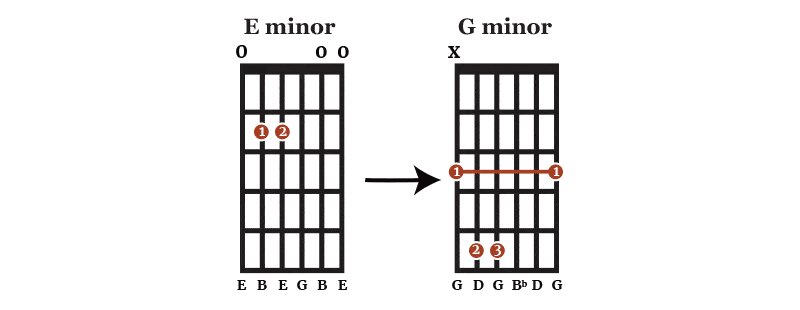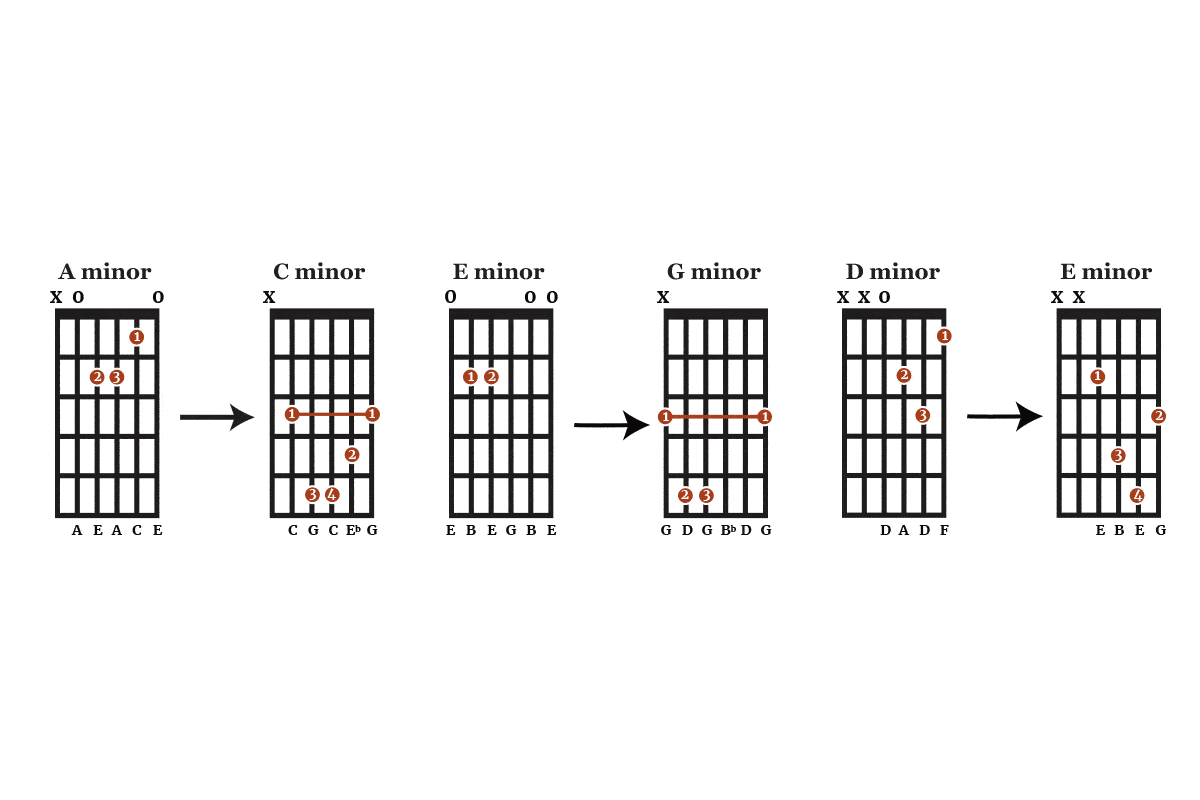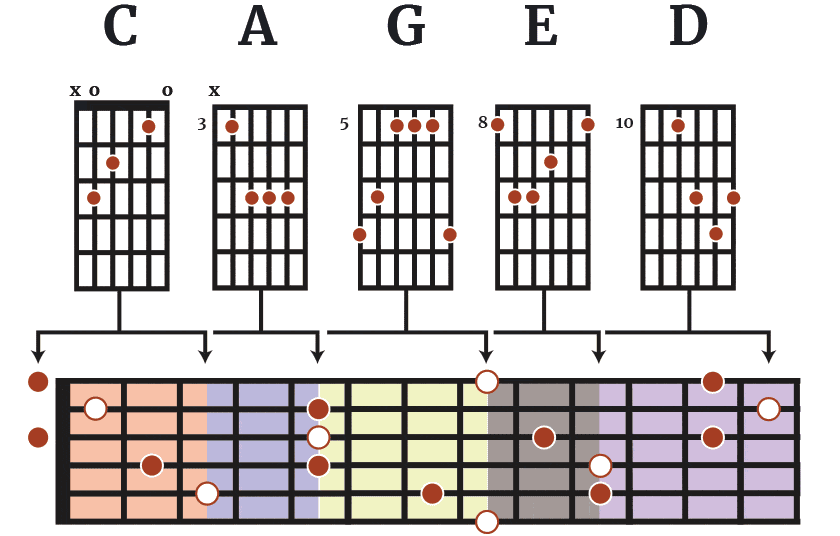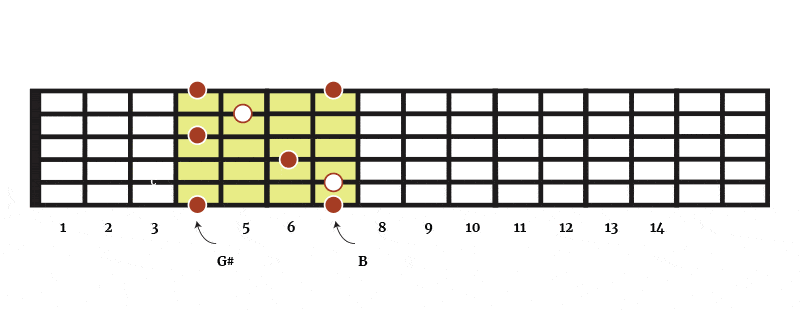The CAGED system is a great way to break up the fretboard into smaller, more manageable sections. But in our other articles on the CAGED system, we’ve only discussed major chord shapes.
Does the CAGED system also work for minor chords?
Absolutely.
We can use the caged system for playing 7th, suspended, extended, and minor chord shapes just by introducing the index finger as a replacement for the nut, while playing one of the CAGED open chord forms.
When it comes to major and minor chords, the only difference between the two is whether the third (2 scale degrees above the root) is major or minor e.g. major third, or minor third (flattened a half step down from Major).
In the example below, on the left, we can see a C Major open chord.

The Major third is the E (2nd fret of the D string). In the example on the right, we have adjusted the fingering by moving the E a half step lower to Eb, thus making the chord a C minor.
Minor Chord Forms
While all 5 minor chord forms of the CAGED system can conceivably be utilized to play minor barre chords up and down the neck of the guitar, in most cases, Am, Em, and Dm chord forms are used, as we’ll discuss in more detail below.
There are a couple of reasons for this.
For one, Cm is not a very practical open chord voicing. It is difficult to voice because when flattening the major third interval by a half step we are required to swap the position of the 1st and 2nd fingers to play the chord shape.
When trying to then add the index finger, replacing the nut, the chord shape becomes difficult to play, let alone transition to. It’s just not a practical chord shape and even if you knew how to play it, it is doubtful you would choose, as there are better options available.
Secondly, in the case of both G and C minor, at least 2 strings are omitted from the open chord shape. Not only does this affect how the chord is barred when closing the chord using the ring finger, it simply doesn’t sound as full and rich harmonically as a chord that includes at least 5 strings.

While different contexts often mean chord voicings of this nature can be quite effective, when first learning the caged system, most guitar players prefer having the option of playing all 6 strings at the 3rd fret using an Em chord form, or playing the top 5 strings (root 5 barre chord) using an Am chord form at the 10th fret.

So, while they can be utilized I’d recommend learning the Em, Am, and Dm chord forms, and then looking into chord inversions if you are interested in adding to your harmonic palette.
With that out of the way, we’ll take a look at the three most common CAGED minor chord shapes below.
A Minor Form Chord Shape

The A minor form is a common root 5 barre chord voicing. It’s essentially the same fingering as E major, except everything is lowered by a string on the guitar fretboard.
If you are only going to learn 2 CAGED minor chord forms, the A minor and E minor shapes will allow you to play most minor chords.
E Minor Form Chord Shape

E minor is arguably the easiest chord to fret in the open position, and it’s not all that much more difficult to play in barre chord form.
When playing remember to only fret the 4th and 5th strings along with the barre 2 frets lower or you will end up playing a power chord. This is due to the lack of a minor or major third, meaning the chord is neither major nor minor.
D Minor Form Chord Shape

Comparing D Major, D minor simply requires the F# (major third) to be flattened a half step.
Much like the D Major form, we don’t need to barre the strings to play the D minor form. Simply fret the 4th string one fret behind the flattened third we mentioned above. This chord form is less common than A minor or E minor but still a useful voicing.
Final Thoughts
Just like the CAGED system allows you to learn major chords, arpeggios, and scales using the 5 chord forms of the CAGED system, we can also utilize the CAGED system to play minor chords up and down the neck of the guitar.



